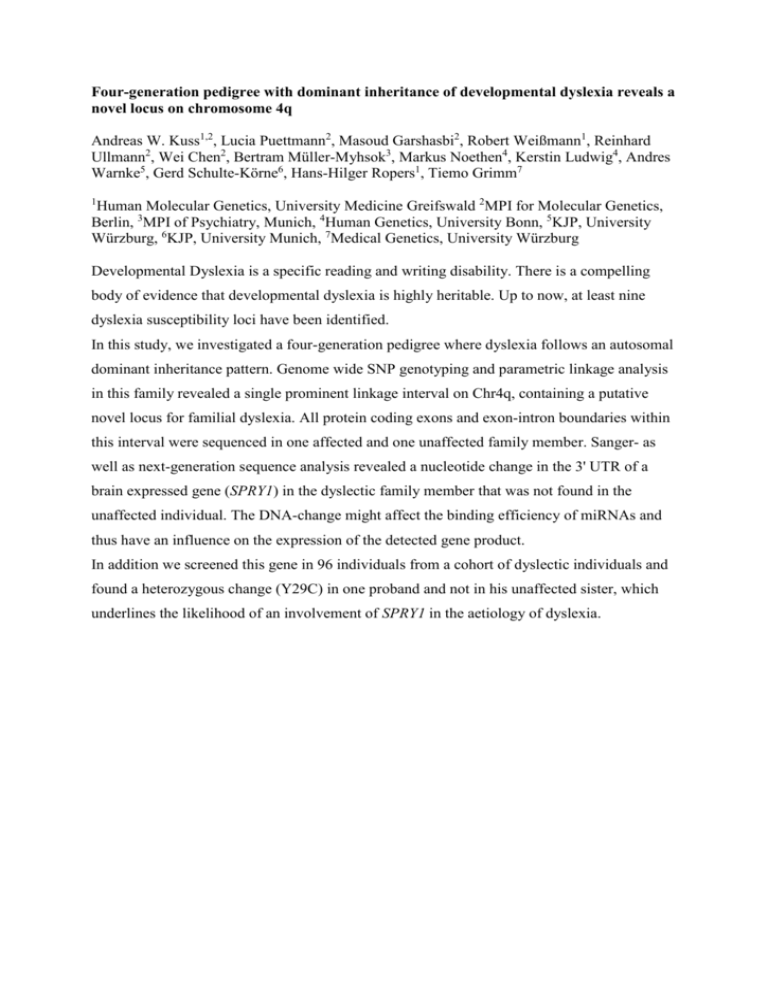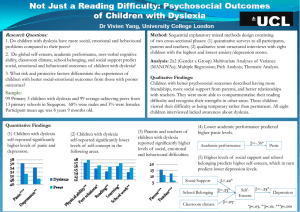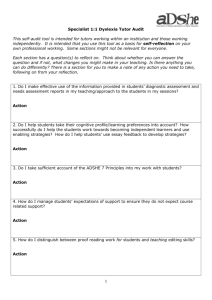Four-generation pedigree with dominant inheritance of
advertisement

Four-generation pedigree with dominant inheritance of developmental dyslexia reveals a novel locus on chromosome 4q Andreas W. Kuss1,2, Lucia Puettmann2, Masoud Garshasbi2, Robert Weißmann1, Reinhard Ullmann2, Wei Chen2, Bertram Müller-Myhsok3, Markus Noethen4, Kerstin Ludwig4, Andres Warnke5, Gerd Schulte-Körne6, Hans-Hilger Ropers1, Tiemo Grimm7 1 Human Molecular Genetics, University Medicine Greifswald 2MPI for Molecular Genetics, Berlin, 3MPI of Psychiatry, Munich, 4Human Genetics, University Bonn, 5KJP, University Würzburg, 6KJP, University Munich, 7Medical Genetics, University Würzburg Developmental Dyslexia is a specific reading and writing disability. There is a compelling body of evidence that developmental dyslexia is highly heritable. Up to now, at least nine dyslexia susceptibility loci have been identified. In this study, we investigated a four-generation pedigree where dyslexia follows an autosomal dominant inheritance pattern. Genome wide SNP genotyping and parametric linkage analysis in this family revealed a single prominent linkage interval on Chr4q, containing a putative novel locus for familial dyslexia. All protein coding exons and exon-intron boundaries within this interval were sequenced in one affected and one unaffected family member. Sanger- as well as next-generation sequence analysis revealed a nucleotide change in the 3' UTR of a brain expressed gene (SPRY1) in the dyslectic family member that was not found in the unaffected individual. The DNA-change might affect the binding efficiency of miRNAs and thus have an influence on the expression of the detected gene product. In addition we screened this gene in 96 individuals from a cohort of dyslectic individuals and found a heterozygous change (Y29C) in one proband and not in his unaffected sister, which underlines the likelihood of an involvement of SPRY1 in the aetiology of dyslexia.











